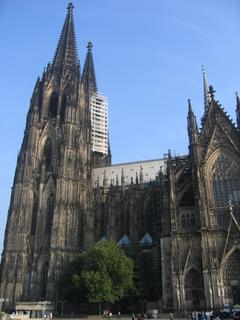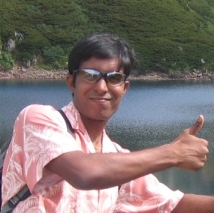
I attended the 4th Annual meeting of Society of Molecular Imaging (SMI) Conference held from September 7-10th at Gurzenich Congress, Cologne, Germany. This was my first experience of attending and presenting my work abroad outside Japan.
I reached Cologne, the day before the meeting started. The journey was smooth and in addition, the weather in Germany was cool and pleasant. Just after getting off at Hubbernhof (Cologne rail station), the sight of tall and picturesque Cologne Cathedral energized me from travel weariness. The ensuing break was good for recuperation until the start of meeting on the next day.
On the initial day, after registration, a considerable search was made to locate the assigned area for setting up of poster as they were not serially arranged. The keynote presentation on the first day titled “Stem cells for CNS Repair” given by Anders Bjorklund, Lund University, Sweden, identified the development of stem cells to treat Parkinson’s disease (PD). The use of primary neuroblasts obtained from aborted fetuses was successfully demonstrated in clinical trials of PD. A study using transplants of transgenic mice expressing GFP under control of rat tyrosine hydroxylase promoter into striatum of neonatal rats having dopaminergic neuronal lesion was presented. However, it was mentioned that immunogenicity was one of the major drawbacks for successful long-term effect. The group is currently trying to develop dopaminergic neuroblasts from neural progenitors and embryonic stem cells for cellular therapy. The development of molecular imaging probes to monitor such a therapy was also addressed.
From next day, the lectures were organized as plenary sessions at mornings and Concurrent Symposium sessions at noon. In the first session, Heiss WD discussed about primary role of 11C-Flumazenil PET in evaluation of malignant brain edema following focal cerebral ischemia. A presentation by Alnawaz Rehemtulla gave a broad overview of understanding different mechanisms of cancer biology through molecular imaging. Some of them included p53 gene activity imaging via luciferase reporter in a transgenic animal model, imaging apoptosis using silencing domains and imaging Akt activity in tumors. A talk by Helmut Maecke focused on pharmacokinetics and biodistribution characteristics of radiometal labeled peptides (111In-DOTATOC, 177Lu-DOTATOC) on somatostatin and Substance P receptors in imaging of tumors. In novel reporter gene session, a pro-drug approach for restoration of dopamine function in PD was presented by Eberling J. A PET substrate [18F]fluoro-L-m-tyrosine (FMT) was used as a reporter probe to measure Aromatic L-amino acid decarboxylase (AADC) activity in striatum of MPTP induced PD monkey models. L-dopa was used as a pro-drug to restore dopaminergic activity in those monkey models. AADC is a key enzyme in final conversion of L-dopa to dopamine. AADC gene was inserted into an adeno-associated virus (AAV) vector, introduced directly into striatum and FMT-PET imaging was performed to determine AADC transgene expression and activity. A constitutive expression for 45 months post-treatment, as observed by FMT imaging and post-mortem immunohistological studies were of particular interest. A preliminary clinical trial in a PD patient with a moderate success was also presented. A concept of artificial reporter gene for MRI using Chemical Exchange Saturation Transfer (CEST) was introduced by Gilad of Johns Hopkins School of Medicine. It basically involved using an oligonucleotide sequence capable of generating CEST polypeptide agents which can produce contrast based on chemical exchange rate of the agent protons with water. A gene coding for polylysine (a stretch of 200 amino acids) was quoted as an example of such a reporter sequence.
The multimodality imaging talks mostly focused on combined PET-MR, discussing about various benefits over PET-CT and instrumentation criterions to be fulfilled for its success.
Poster sessions were in the evenings and categorized over three days. There were more than 600 poster presentations on varied aspects of molecular imaging. Perhaps for that reason, the time limit for each presentation was just 2 minutes, in which hardly one could elucidate their work or comprehend that of others. I had few queries on my poster regarding the intended mode of adenoviral delivery in animal models, the type of imaging and so on.
Overall, it was a tremendous learning experience for a first time attendee like me. I hope to gain more knowledge in future meetings.
Barring the meeting, the city of Cologne was splendid with its rich blend of traditional and modern culture. The ascent to the top of Cologne Cathedral (Tower height of 157m and world’s tallest structure until 1884!!!) and viewing the city through miniature windows at multiple angles was amusing. The central shopping streets were always buzzing with charming people and open-air cafes. The dinner cruise on the river Rhine and the concert at Gurzenich are few of the memories to cherish for a long time to come…
